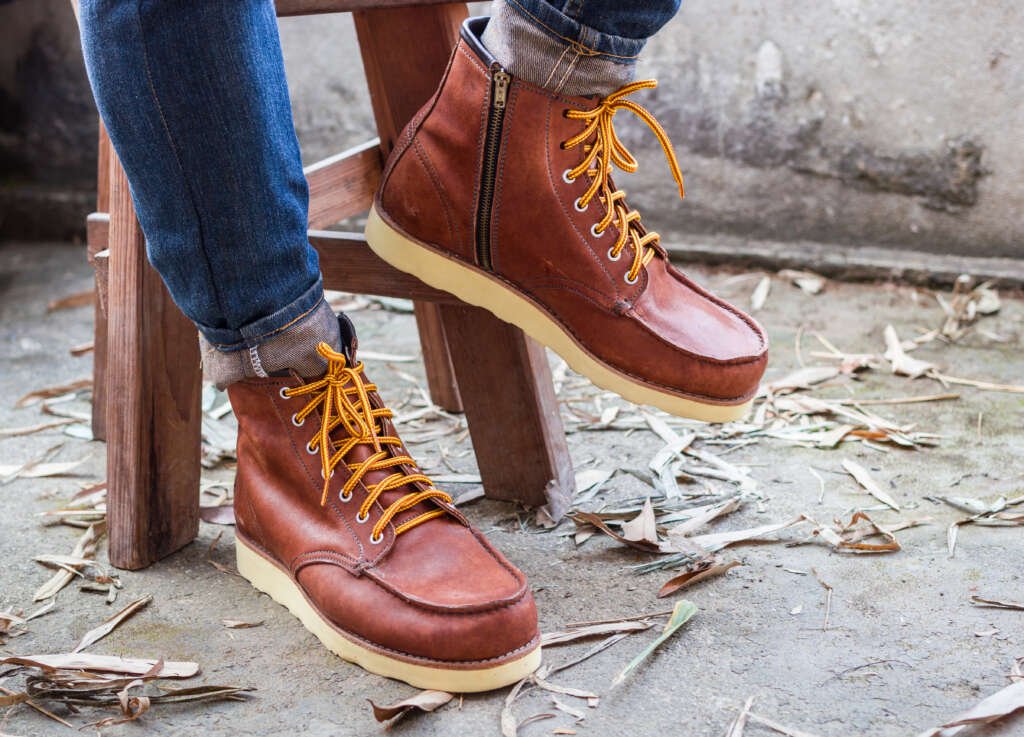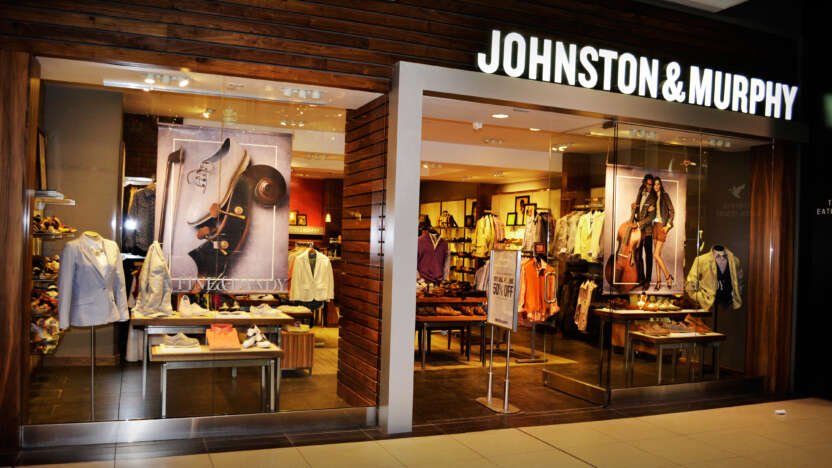The Canadian retail landscape has seen another important departure. The renowned American footwear company Johnston & Murphy shut down all six of its locations in Canada on January 18, 2025. This shocking announcement has left countless professionals and quality-conscious store owners who have been led astray by this dramatic mark for over 170 years.
This type of historical company left the Canadian market completely? The story behind the Johnson and Murphy Canada Store Closure reveals a complex network of increasing costs, shifting retail dynamics, and strategic repairs that provide valuable insight into the current state of Premium retail in Canada. In this article Vibzia will tell you about deep information about Johnson and Murphy Company.
A Legacy of American Craftsmanship
Johnston & Murphy isn’t just another shoe company – it’s a living piece of American history. The company, which was established in 1850 in Newark, New Jersey, has the amazing distinction of producing shoes for every American. President since Millard Fillmore. From Abraham Lincoln to Joe Biden, They has literally walked the halls of power for more than a century and a half.
The brand created its reputation on extraordinary craftsmanship, especially its signature Goodies Welt Construction Method, which makes shoes produced in the previous decades, not in the seasons. Their committee on quality leather and traditional shoe making techniques established them as a gold standard for professional footwear in America.
In 1951, General Shoe Corporation (now known as Genesco) acquired Johnson & Murphy and relocated its operations from Newark to Nashville, Tennessee. While retaining its reputation for superior quality and classic design, the brand grew beyond its typical men’s footwear to include women’s shoes, casual designs, and accessories under Genesco’s ownership.
Premium Products That Define Professional Style
Johnson and Murphy have moved before the origin of the president’s shoes and maintained their commitment to crafts. Today’s product setup shows the brand’s ability to mix tradition with modern comfort technology.
His most important XC4 line revolutionized the Dress Shoe category by incorporating athletic shoe comfort features into the classic silhouette. These shoes feature moisture evacuation, pillow-like footbeds, and flexible structures that allow professionals to work quickly while living comfortably on long working days.
The brand’s dress shoe collection remains true to its heritage, offering hand-crafted options in premium leathers with traditional construction methods. From cap-toe oxfords to sleek loafers, these shoes represent the pinnacle of American shoemaking tradition.
In recent years, Johnson and Murphy expanded its offerings to include women’s shoes, clothes, and leather articles, positioning itself as a full lifestyle brand. Their marketing campaign, which includes the memorable slogan “Not Your Dad’s Shoe Company”, was meant to attract young professionals by honoring their cultural and craft protection.

Understanding the Johnston & Murphy Canada Closure
The closure of all Canadian operations took effect on January 18, 2025, and affected six retail locations and the brand’s Canadian e-commerce platforms. Closed stores included Toronto Pearson International Airport, the Mapleview Centre at Burlington and other strategic retail spaces across the country.
Company spokesperson Kimberly Drew described the closures as a result of rising operating costs which limited retail opportunities in Canada. Several factors contributed to this difficult decision:
The dramatic increase in Canadian operating costs for retail made the physical store model unsustainable. Increased commercial prices, a rise in labour costs, and high legislative expenses for compliance with regulations strongly affected profitability. Unlike large retailers with increasing economies of scale, their premium status and small store count made them particularly vulnerable to these cost pressures.
The fluctuations in the exchange rate between the US dollar and the Canadian dollar also created pricing challenges. As an American brand, they faced constant pressure to accommodate Canadian prices, making it difficult to maintain a competitive position while preserving their profit margin.
Changes to fast online shopping have led to a decline in foot traffic at traditional retail outlets. Premium footwear, which often requires community and touch evaluation, proved to be challenging to be effective through digital channels alone, especially when competing with established e-commerce players.
The company announced that customers will no longer be able to provide e-commerce orders for shipment, and the remaining inventory will be sent back to US redistribution companies.
What’s Next for Johnston & Murphy?
Rather than completely abandoning the Canadian market, Johnston murphy Canada is pivoting to a wholesale-focused strategy. The company plans to continue serving Canadian customers through wholesale partnerships with established retailers including Factory Shoe, Leclerc Chaussures, and Duggers.
This strategic shift reflects broader retail trends where brands are reducing direct-to-consumer overhead while leveraging established distribution networks. By partnering with existing Canadian retailers, they can maintain market presence without bearing the full cost of retail operations.
The company is also revamping its international e-commerce operations to support a digital presence in Canada, though specific details about cross-border shipping capabilities remain unclear.
The parent company of Johnston & Murphy, Genesco, keeps funding the brand’s retail presence at airports and comfort-oriented product lines. With Johnston and Murphy celebrating its 175th anniversary in 2025, the company emphasizes continuing to evolve to meet changing consumer needs.
Where Canadian Customers Can Find Johnston & Murphy Now
Canadian fans of the brand aren’t completely out of luck. Several options remain for accessing their products:
Authorized Canadian Retailers: Factory Shoe continues to carry Johnston and Murphy products across multiple locations. Leclerc Chaussures serves Quebec markets, while Duggers provides access in select regions. Genuine items with appropriate warranty support are guaranteed by these collaborations.
Cross-Border Shopping: The U.S. Johnston & Murphy website remains accessible, though shipping policies and costs to Canada may vary. Some customers near border locations might consider shopping at U.S. stores directly.
Airport Retail: Johnston & Murphy maintains airport locations, making them accessible to travelers. The Toronto Pearson location closure eliminates this convenient option for many Canadian customers.
When purchasing from authorized retailers, customers should verify authenticity and warranty coverage. Counterfeit their products unfortunately exist in the marketplace, making authorized dealer relationships crucial for ensuring genuine products.
Competitive Landscape: How they Stacks Up
The closing of Johnston and Murphy Canada takes place in a very competitive market for high-end shoe companies. Understanding how the brand compares to alternatives helps explain market dynamics.
Cole Haan has effectively increased its market share in Canada by focusing on cutting-edge comfort technologies and stylish designs. While retaining premium positioning, its Grand.OS platform and casual-professional hybrid designs attract to younger consumers.
Allen Edmonds, another American heritage brand, faces similar challenges but maintains stronger direct-to-consumer presence through established Canadian partnerships and cross-border shipping solutions.
Florsheim offers heritage styling at more accessible price points, making it attractive during economic uncertainty. Their Canadian retail partnerships have proven more resilient than they direct approach.
The broader trend shows that international top-rate brands are suffering from Canadian retail expenses, even as home and well-established worldwide players benefit from market share. Currency fluctuations, supply chain complexity, and regulatory differences create ongoing challenges for global retail operations.
Consumer choices are also shifting toward manufacturers that offer both traditional craftsmanship and contemporary comfort technology. This tendency was addressed by Johnston & Murphy’s XC4® line, however the closure points to execution issues in the Canadian market in specifically.

Essential Care Guide for Your Johnston & Murphy Investment
Whether you’re a longtime Johnston and Murphy owner or considering your first purchase through Canadian retail partners, proper care ensures maximum value from these premium shoes.
Leather Care Fundamentals: Use high-quality leather balm every 3-4 months to maintain tenderness and prevent cracks. The cedar shoe tree is inserted immediately after use and helps absorb moisture.
Goodyear Welt Advantages: Johnston & Murphy’s traditional construction allows for professional resoling, extending shoe life significantly. A quality cobbler can replace soles multiple times, making these shoes generational investments.
Rotation Strategy: Premium leather shoes benefit from rest between wears. By alternating between many pairs, leather may completely dry and heal, thereby increasing its total lifespan.
Weather Protection: Apply appropriate weatherproofing treatments before first wear and seasonally thereafter. This protection is especially important in Canadian climates with salt, snow, and moisture exposure.
Professional Maintenance: Annual professional cleaning and conditioning services help maintain appearance and structural integrity. Many Canadian cobblers specialize in premium footwear maintenance.
For online purchases, ensure you select the correct size by consulting Johnson and Murphy’s size guide and consider professional fittings if possible. Premium shoes should be dense yet relaxed, with leather that is slightly loose to accommodate the foot size.
The Future of Premium Retail in Canada
The Johnson and Murphy reflect extensive challenges for international premium brands in the Canadian market. Increasing operating costs, currency rates and changes in consumer behavior create an ideal storm for special dealers.
Successful brands are adapted to a combination of wholesale participation, strategic e-commerce and selective physical appearance. The complete return model chosen by Johnson and Murphy represents a solution, even though it provides for brand control and customer experience.
Canadian consumers attract rapid growth, demonstrating a long-term commitment to the market through local participation, excellent customer service, and community engagement. Johnson and Murphy’s wholesale strategy can prove to be successful if partners can effectively represent the brand position and the cultural heritage stories.
Conclusion:
Johnston & Murphy’s exit from Canada marks a shift in retail strategy, not brand value. With 175 years of heritage, it now relies on trusted local retailers to serve loyal customers. Although stores and e-commerce are closing in Canada, Canadians can still buy the same quality shoes through bulk partners. This step reflects retail challenges, but also commitment to the flexibility of the brand and timeless craftsmanship.





